McDonald's around the world
A discussion with author of McAtlas: A Global Guide to the Golden Arches, Gary He
(Short version: Gary He wrote a wonderful book, McAtlas: A Global Guide to the Golden Arches, about McDonald’s all around the world, which I highly recommend. It’s a smart, beautiful book, that is also a lot of fun. Oh, and it has won two James Beard awards, so I’m not the only one who thinks it is great.
I’ve been spending this week in my local McDonald’s, reading the book and writing this, and the floor managers saw the book, loved it so much, they have all bought copies. So, that alone should be recommendation enough!)
I owe my writing career to McDonald's, and more precisely to a photo of Takeesha and Steve sharing a meal in the Hunts Point franchise in the Bronx at 10 p.m. on a Sunday evening. A year later I wrote an article about McDonald’s as community centers that went viral, which gave my work a platform it had never had. In a few months I'd become "that McDonald's guy," and whatever I have done since, I've been intertwined with them.
I'd never intended to be that, and didn't think much about McDonald's before I began documenting those living on the streets of Hunts Point. There, I routinely ended up in the McDonald's for the same reason they did: it was one of the few functional spaces in the neighborhood that "worked." You could escape the heat or cold, charge your phone, get inexpensive food, use the bathroom, and connect to Wi-Fi, while generally being left alone, as long as you didn't act too weird.
Even then, I didn't realize that McDonald's would be the story that resonated with people. I wasn't trying to make it one. I'd only taken the photo of Steve and Takeesha as an afterthought at the end of a drama-heavy day (the type that comes with addiction). They seemed so peaceful compared to everything that had come before, as well as what was around them: a chaotic cacophony of tempestuous teens, metallic pinging from the kitchen, and table-shaking rumblings from muffler-challenged motorcycles in the parking lot.
In a day full of major and minor degradations, humiliations, and indignities, here was a small but meaningful moment of basic human dignity, and it was taking place under clinical fluorescent lighting in a dirty, loud, and otherwise nondescript McDonald's.
It was one of the most poignant photos I've taken, and my first real "aha" moment of seeing McDonald's as more than a place to get a cheap meal, and in the reaction to the picture, I realized others didn't understand it played such an important social service, especially for those near the bottom.
As I began to spend more time driving around the US, roughly four hundred thousand miles over six years, talking to and photographing people, I found I was again being pulled into McDonald's, so much so that it was taking up a large part of my day. I would be in at opening to get coffee and chat with the regulars, a few more times later to rest from my walks, and then again at night to write up my notes while splurging on a McFlurry, assuming the machine was working. It was here, while presumably taking a break from my "work," that I realized I was learning the most from the people I met, especially late at night, when it was often only me and those with no other respectable place to go.
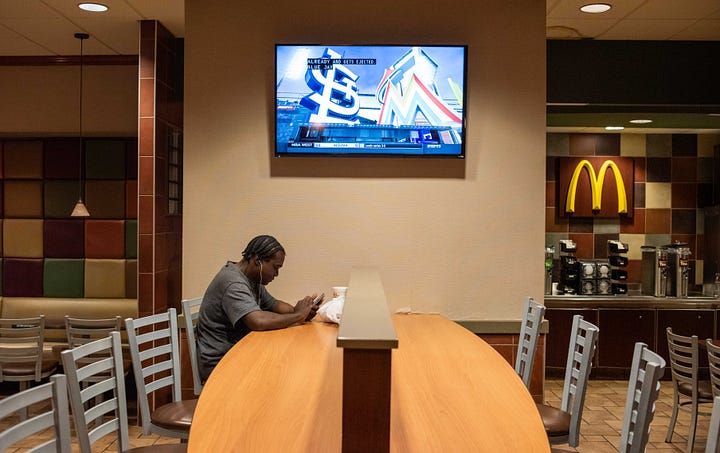

Initially, when someone would agree to a portrait, I would take them outside, because the lighting, decorations, and clutter of McDonald's didn’t make for portraits that I thought were respectful enough. Then I realized, wait, McDonald's IS THE STORY, and this is where they chose to spend time, so I switched to doing my best to capture their unique beauty.
For the next five years they became central to my work, so much so that my planned title for the book from that period, Dignity, was "Everything you need to know about America can be learned in a McDonald's," something I still believe unironically1.
When I began this newsletter and started going overseas, I saw the local McDonald's, I even went into a few, but they didn't have the same draw for me. Partly because I was tired of being that guy, but also because their US role as a default community center wasn’t necessary, or it was being performed by more interesting local options. I already knew McDonald's, but I didn't know 7-Elevens, or izakayas, or my old man bar in Istanbul.
Or so I thought. Two months ago I met Gary He, who wrote the fabulous book McAtlas: A Global Guide to the Golden Arches, and realized I should have gone into those McDonald’s, as he did all across the world for five years.
What he found is that while on the outside they might appear to be the same old same old, a bland uniformity that at worst represents America’s globalizing influence, and at best a familiar outpost, once inside they reveal a nuanced diversity, one that highlights how local cultures can survive, thrive, and eventually take possession of colonizing forces, through stubborn persuasiveness. Or to be more blunt, how McDonald’s are more changed by where they are, instead of it being the other way.
I was beginning to see glimmers of that on my own, after my experiences in China especially2, but I’d never had an aha moment, as Gary did, and I doubt I ever would have.
So I am thankful I found his book, because it has fundamentally changed how I think about McDonald’s, which given how much I’ve thought about them in the past (I must now have at least a PhD in McDonald’s-ology), I didn’t think possible.
My introduction to Gary, and his book, was at an off-the-record dinner in DC: myself, him, one other journalist, and fifteen members of McDonald's upper management. It was a fun night that I was flattered to be at, but most of all was glad I met Gary.
One of the lessons I've learned from life is if you find someone doing something very similar to you, especially if it's a niche thing like photographing and studying McDonald's, don't become jealous, envious, or competitive, but instead try and embrace them as a friend.
I can't say enough positives about his book, which is beautiful, smart, and will change how you think about McDonald's and its role in the world, as well as how we think about people and food.
It's also just a fun book to flip through, and helpful. As an example, I'm leaving in a week for São Paulo, so I looked at the Latin America section, and sure enough there were photographs and a write-up on Brazil's McDonald's, plus information about the franchise close to my hotel on Paulista Avenue and their specialty Banana Pie and Pão de Queijo menu items.
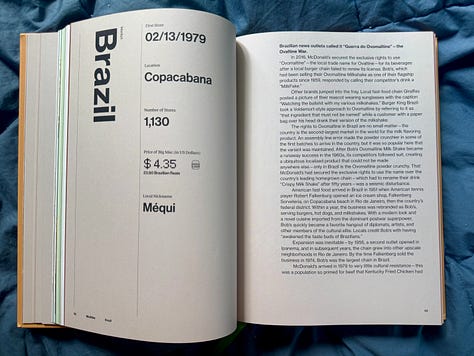
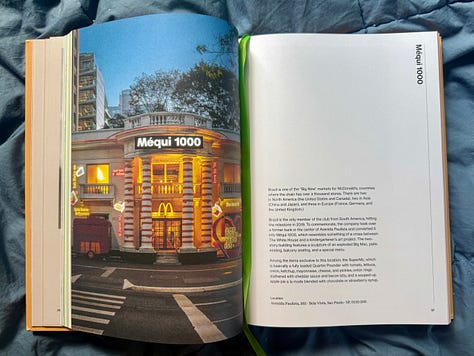

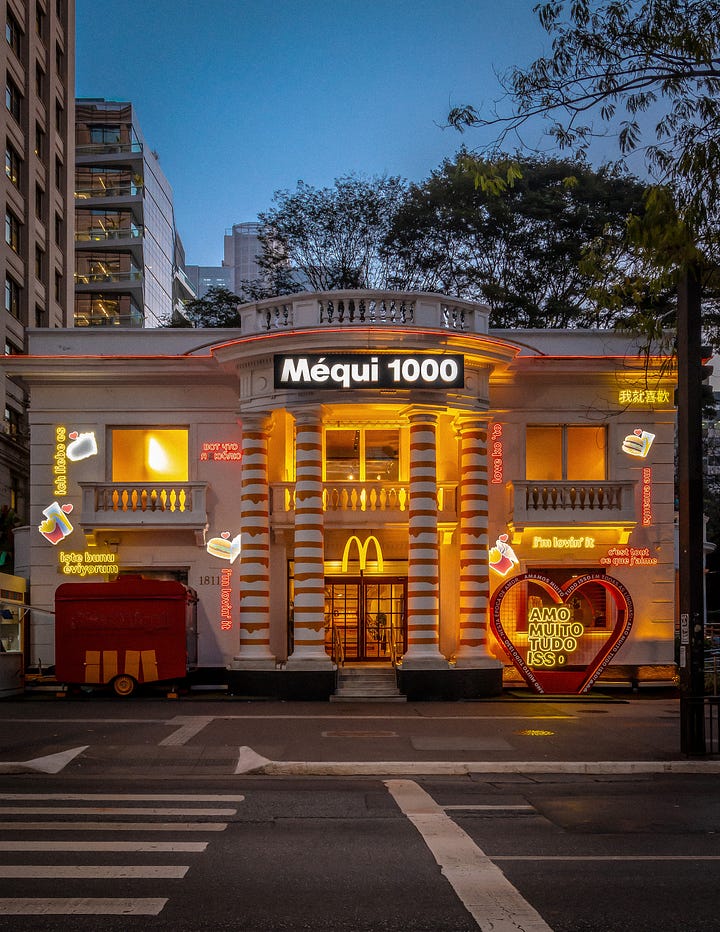
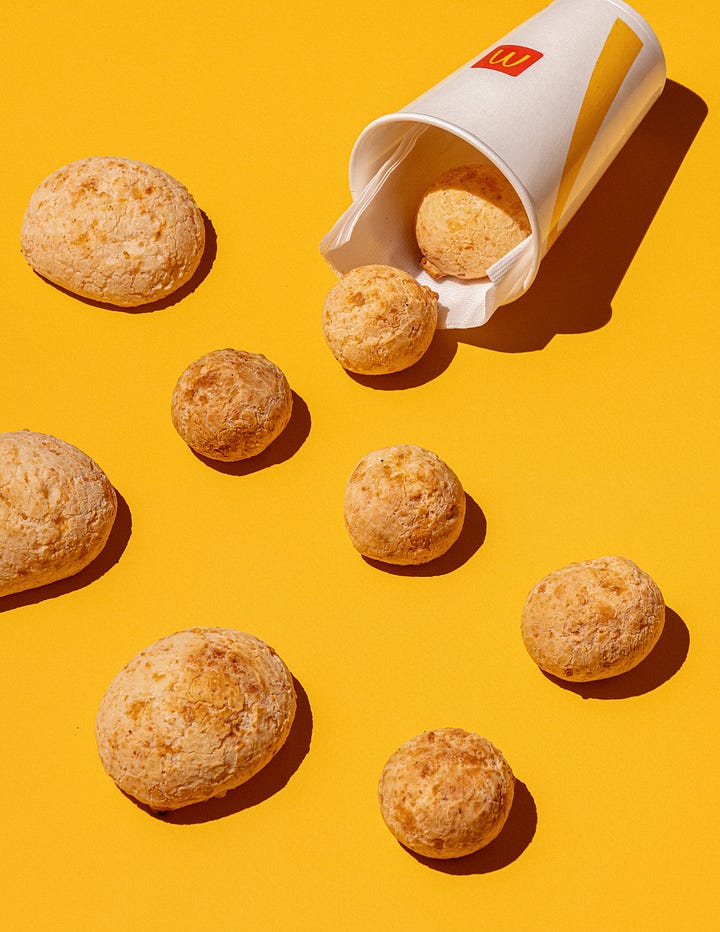
Gary was kind enough to do a short Q&A with me, which is below, but I hope you support him by buying his book. You won’t be disappointed.
PS: The book itself is large and wonderfully made. It itself is a work of art.
I will start with the obvious question: Why? What about McDonald's enticed you to spend X years, travel Y miles, to produce this beautiful book?
"McDonald's is the largest and arguably most important restaurant chain in the world. As a symbol of Americana, few brands come close. So when it became apparent to me that localizations were more than a marketing novelty for the brand, I felt that it was important work to catalogue the items, the stores, and the history behind it."
By the way, how many years and how many trips did this take? I’m impressed with so much about your book, but the travel alone makes me tired!
I’ve been yapping to my friends about this project for at least a decade, and it was starting to come together slowly before the pandemic. But the bulk of the travel was done from 2021-2024, when I visited fifty-five countries across six continents. Some of the major markets like France, Japan, Hong Kong, Germany, required multiple visits. I am not confident that my body and mind has yet to recover almost a year after the last major trip, and I’m quite impressed that you are able to do it on a continuing basis (while walking everywhere, no less!)
When we met with the McDonald's executives they all told the story of how they first 'fell in love' with the chain. Do you have a similar first happy memory of the franchise? And if so, what was it?
Hah, that was an interesting dinner. I am not sure I can categorize myself as "in love" with the chain. Though, like most people, I have been a lifelong consumer—McDonald's was a treat for getting good grades when I was a kid, and in college I survived on Dollar Menu double cheeseburgers and chicken fajitas across the street from NYU. But the moment that made it all click for me in the context of this project was during Ramadan in Morocco—McDonald's had an iftar meal kit that came in this box designed with Arabic motifs, filled with dates, chebakia (a honey-covered local pastry), harira soup, and a yogurt-milk drink. It was so different from anything I had ever expected from a McDonald's restaurant that it triggered a deep dive into the rabbit hole of the chain's localizations. That's when I realized that the documentation of it was severely lacking, even from McDonald's itself, and a million light bulbs went off in my head.
Yeah. I saw that in Tashkent, but at KFC, and other fast-food restaurants. Everyone had apps on their phones there, and the whole mall food court rang out in a cacophony of beeps and chimes at sunset as people sat hovering over their until-then untouched food. Uzbekistan doesn't have McDonald's, and really wants one. People actually talk about not having it as representing a failure. Did you hear that almost pride in having a McDonald's? A "look, we made it! How has this changed your view of both McDonald’s and what most people want?
The whole thing where people sit in the food court staring at their meals waiting for the signal to eat at sunset was so fascinating, I am happy that you've been able to be a part of it, too. The experience was so impactful to me that I made the whole scene in Saudi Arabia the opener to the book's introduction. In the United States, I feel like we utilize the chain for its speed and affordability, but in a lot of places overseas, it really is a symbol of Americana and everything that it represents. Of course, sometimes that feeling is anxiety about some of our more imperialist habits, but there's definitely still a lot of joy. I remember reading this old news story about how when Serbians got their first McDonald's, they would taunt the opposing team's fans at Balkan soccer matches over not having one. That kind of pride for their area having gotten a bastion of the Golden Arches is very real.
You point out in the book that the idea McDonald's represents a globalizing uniformity is too simplistic, and you do this by highlighting how each McDonald's is a little different. Writing, "Globalization isn't a one-way street" and McDonald's has had to learn to adapt." Your book is a literal atlas of that, with photos of different menu items. I've seen so many examples of this, where the local culture "wins," such as Dunkin serving spaghetti as a breakfast item in Jakarta3. Do you come away from this project more or less hopeful about local culture enduring?
When it comes to modernizing and homogenizing, sure it’s inevitable, but I think we have to give people a bit more credit in their ability to know when enough is enough and to push back. You don’t even have to go overseas to see how the early prognosticators of doom and gloom were a bit off about the endgame.
There have never been more farmer’s markets in the United States, a lot of that a result of a cultural backlash against processed foods in the late ‘90s/early 2000s. But at the same time, there have never been more McDonald’s locations, and the company is making more money than ever before. So, both things can be true. The global and the local will continue to intertwine, food and dining habits will continue to evolve, and documenting that change will continue to be a joy.
About that evolution, you note that McDonald’s is often how most of the world views foreign food, for instance how locals understand the hamburger, as well as how they end up understanding their own local food, or modifying it, by additions to the menu. You point out that ‘authentic is a moving target’, and McDonald’s is certainly adding to that motion. Do you ever get a sense people actually preferred McDonald’s version of the local dishes, or saw them as replacing it, or more as a weird fast-food hybrid?
Hmmm, that's a challenging one to answer because I didn't take any polls that would allow me to answer that in a data-driven way. I will offer up two thoughts on this:
First, the world is moving faster, and food is becoming more mobile. This is evident even outside of the McDonald's universe. So when you see something like the Teriyaki McBurger being a dominant localized offering in Japan for decades, it doesn't necessarily mean that customers prefer it over a proper sit-down dinner. More likely it speaks to the need to cater the speedy meal (the burger) to the taste buds of the locals (the soy sauce notes).
Second, you mention one of my observations, which is that McDonald's network of restaurants around the world has been serving as a delivery vehicle for cultural items not just from the United States, but other countries. The macaron, which originated in French McCafés but is now sold at McDonald's restaurants in over a dozen countries, is a perfect example. In so many of these countries, the Golden Arches version of the macaron is how the local population is being introduced to this French food item. And even in France, they've done taste tests on the street, pitting the cheaper McDonald's macaron against one from the upscale vendor, Ladurée. Very often, the former won out.
When we met, I was as struck by your personal story as with the book. You don't have the traditional NYC artist biography, at least not the more modern version. To be blunt, you come from a pretty humble background. If I remember correctly, your parents were immigrants in Sunset Park, and neither was a professional artist. Can you write a little about how you got drawn into the art scene, and how your background impacts what you do now? I would say I see an "everyman" appreciation in your book that is missing in a lot of the art world.
Ha! Maybe the book has sort of become art, but I don't really see myself as an artist. I'm more of a journalist/documentarian, for which I think the immigrant labor class upbringing helps with not overlooking or dismissing what large swaths of the population are doing. Sorry I don't have a more complex answer for this, lol.
Do McDonald's serve as community centers in other countries? I saw that it certainly does in China, but what about other countries?
I discovered a book while working on the project that really reaffirmed to me that this could be an academic-level study: Golden Arches East, a collection of reports by sociologists in East Asian markets concerning the arrival of McDonald’s, some of the work reaching back as far as fifty years ago4. Many of the observations concern the use of the restaurants as third spaces across generations, from children using them as de facto after school centers to the elderly meeting there as a way-point for morning tea. I made similar observations around the world while I was doing field work—from Europe to the Middle East and of course it still rings true in Asian markets. I like that our two projects overlap in this way, I bet we could yap about it forever.
Geeky question. I'm really impressed with your photos, perhaps that's why I consider you an artist. They are really that good. I also know how hard they must have been to get. What camera do you use, any technique tips, and feel free to photo nerd out on this one.
I wanted to keep photo style the same for all of the food, to mirror the standardization that McDonald’s is known for. I tried a bunch of different styles, but I found the one that was the easiest to keep consistent was the single strobe hard light (shout-out the G.O.A.T. Alex Lau!)
I shot all of the food on sheets of colored construction paper, which are easier to travel with than roll paper, and also easier to find in craft stores when I ran out of sheets from grease and sauces getting on them. Almost every single food photo was shot on the floor of a hotel room.
The main gear I traveled with was a Canon R5, RF 24-105 f/4, Profoto A2, and Mavic Mini 3 Pro. Occasionally there would be a 16mm, 35mm, and/or another body thrown in there, but I tried to keep the bag as light as possible. Though not as light as you have it, which I am envious of!
PS: If you have any questions for Gary, drop them in the comments, and hopefully he can jump in an answer them. Until next week!
That time period was bracketed around the rise and election of Donald Trump, and while I did my best not to make politics central to what I did, I couldn't not comment on what I saw, which was a lot of support for him, certainly far more than the media was suggesting, and that got me labeled (and dismissed) as one of the people interviewing voters in "rust-belt diners." Which irritated me for many reasons, and I mostly ignored it, but I would quip, no, "not voters in rust-belt diners, but voters in rust-belt McDonald's" which I had intentionally chosen, because diner customers are generally more politically engaged, and often are what I call the local gentry. Members of the local political class, such as city commissioners, party delegates, etc, who generally get put in the media spotlight, as if they speak for all of the region. Which they don't. McDonald's customers on the other hand, are more reflective of voting demographics. An example of why I do believe if you want to understand America, spending time in McDonald’s is not a bad way to go.
I understand the idea of eating spaghetti Bolognese for breakfast in a Jakarta McDonald's might not seem like an Indonesian win, but of course pasta and noodles have made the full circuit from Asia to Europe and then back again, and noodles for breakfast is a very Indonesian thing.
PS: It wasn’t that bad!
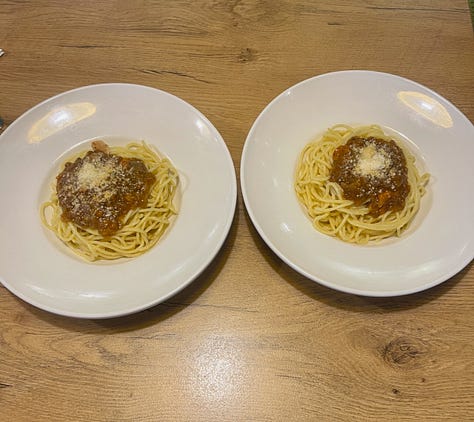
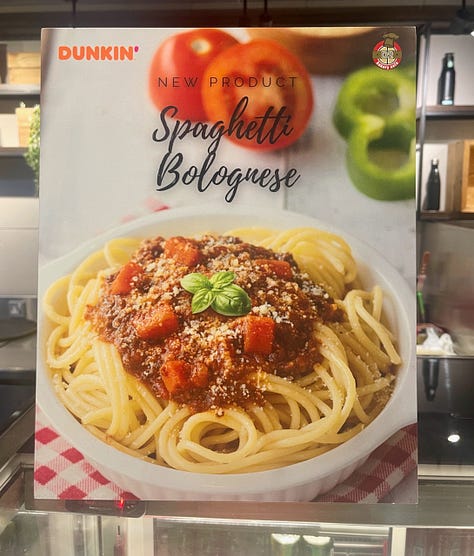
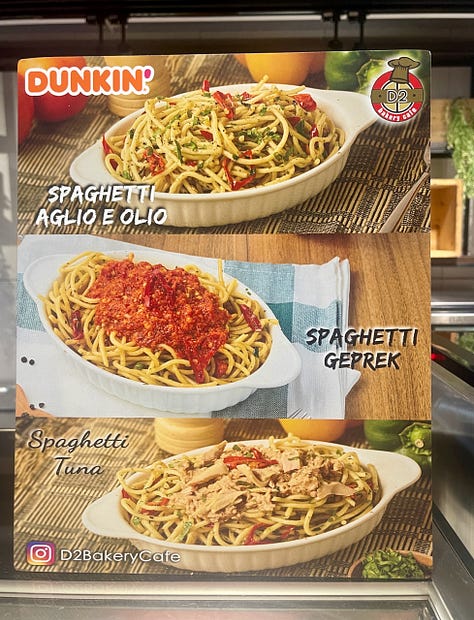
Just bought this. Will report back later!

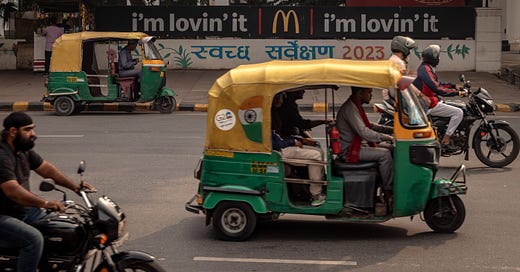



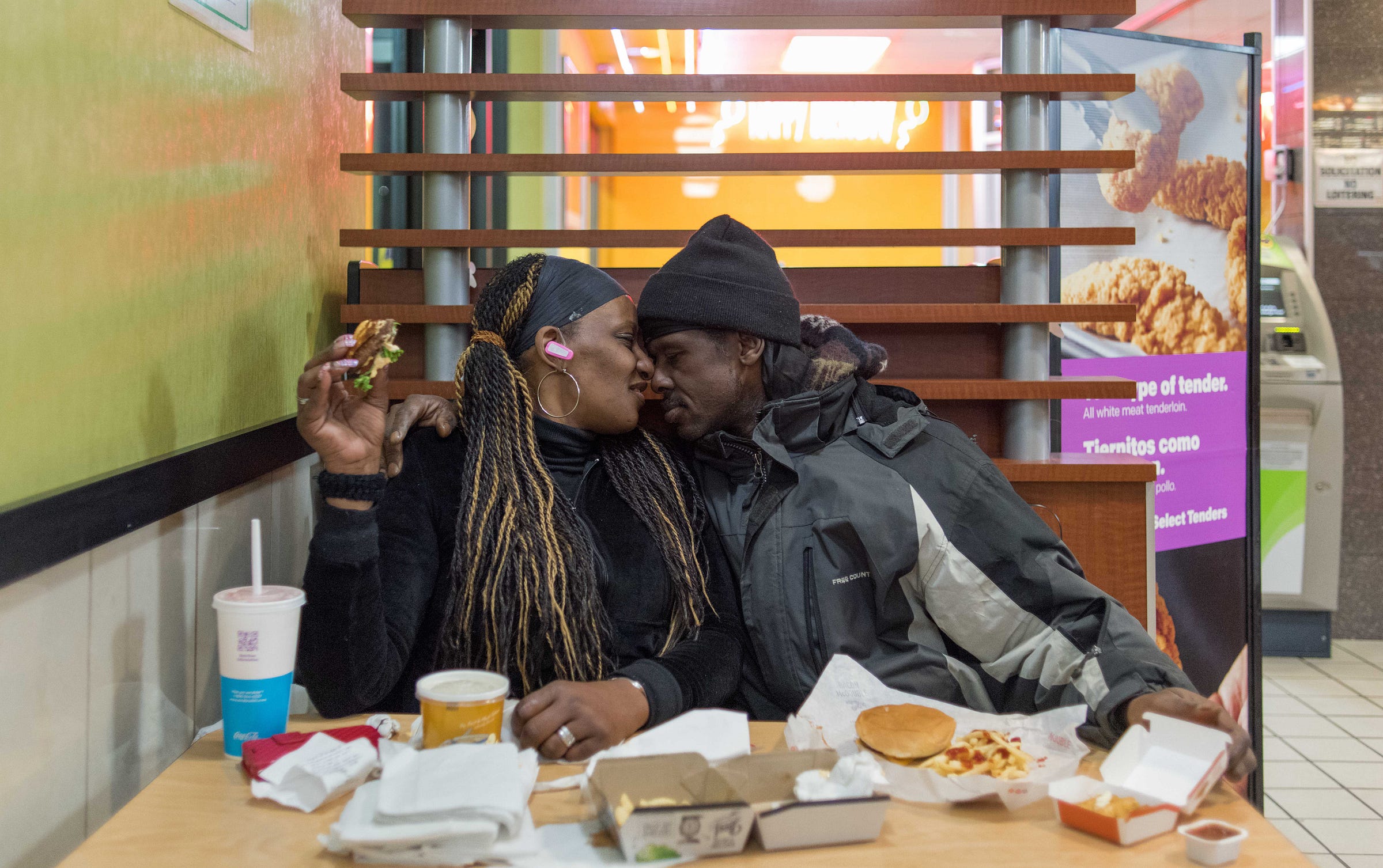
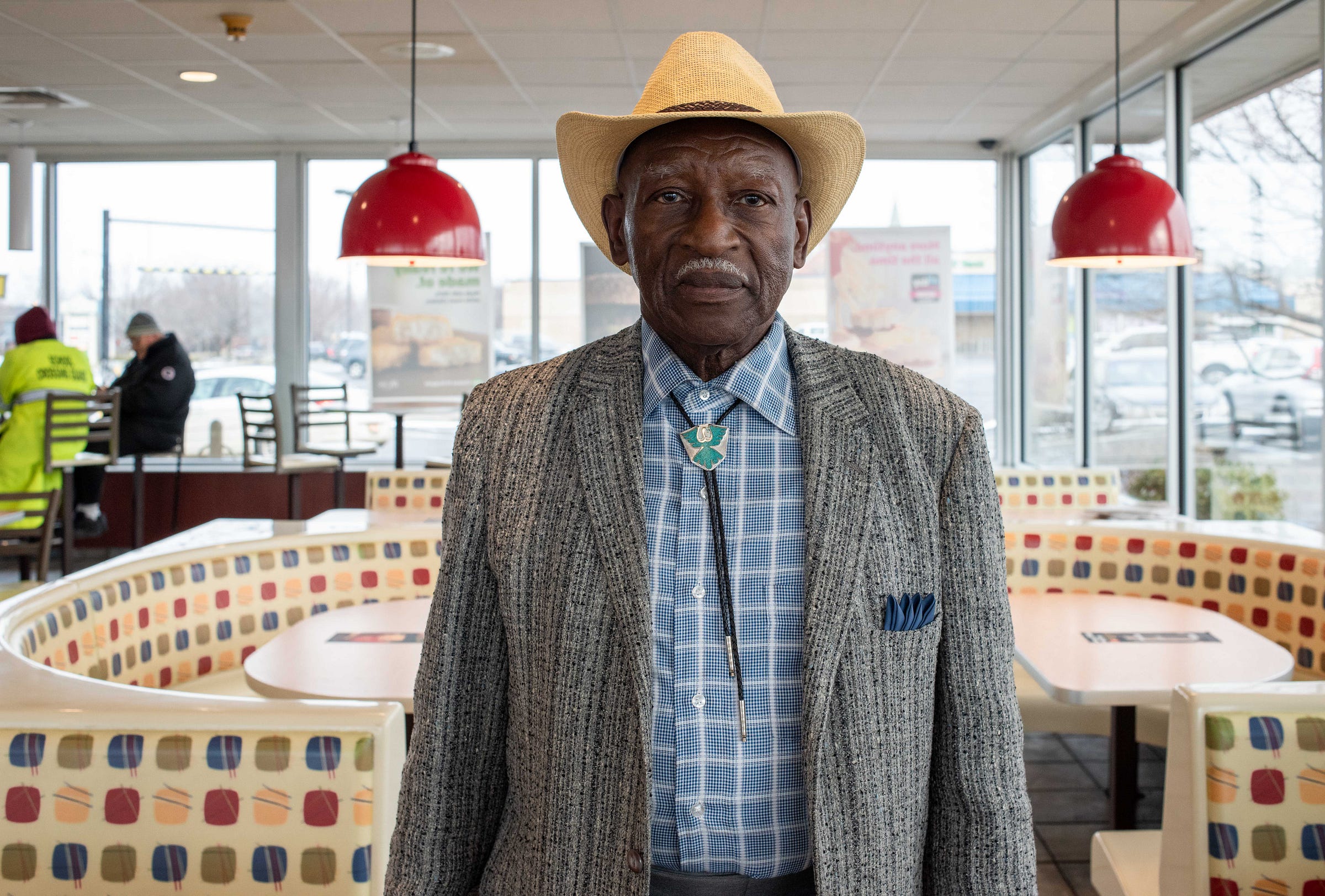
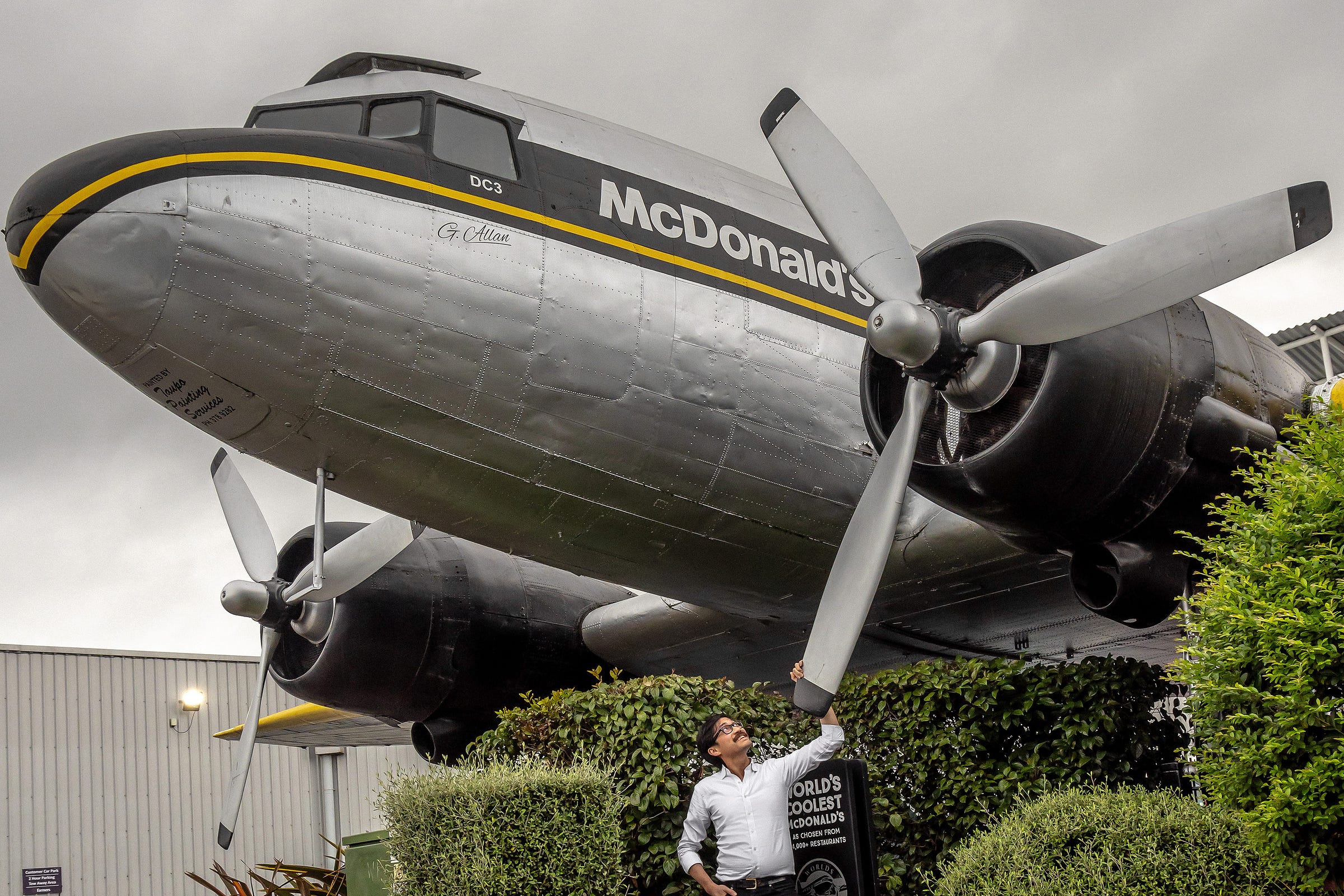
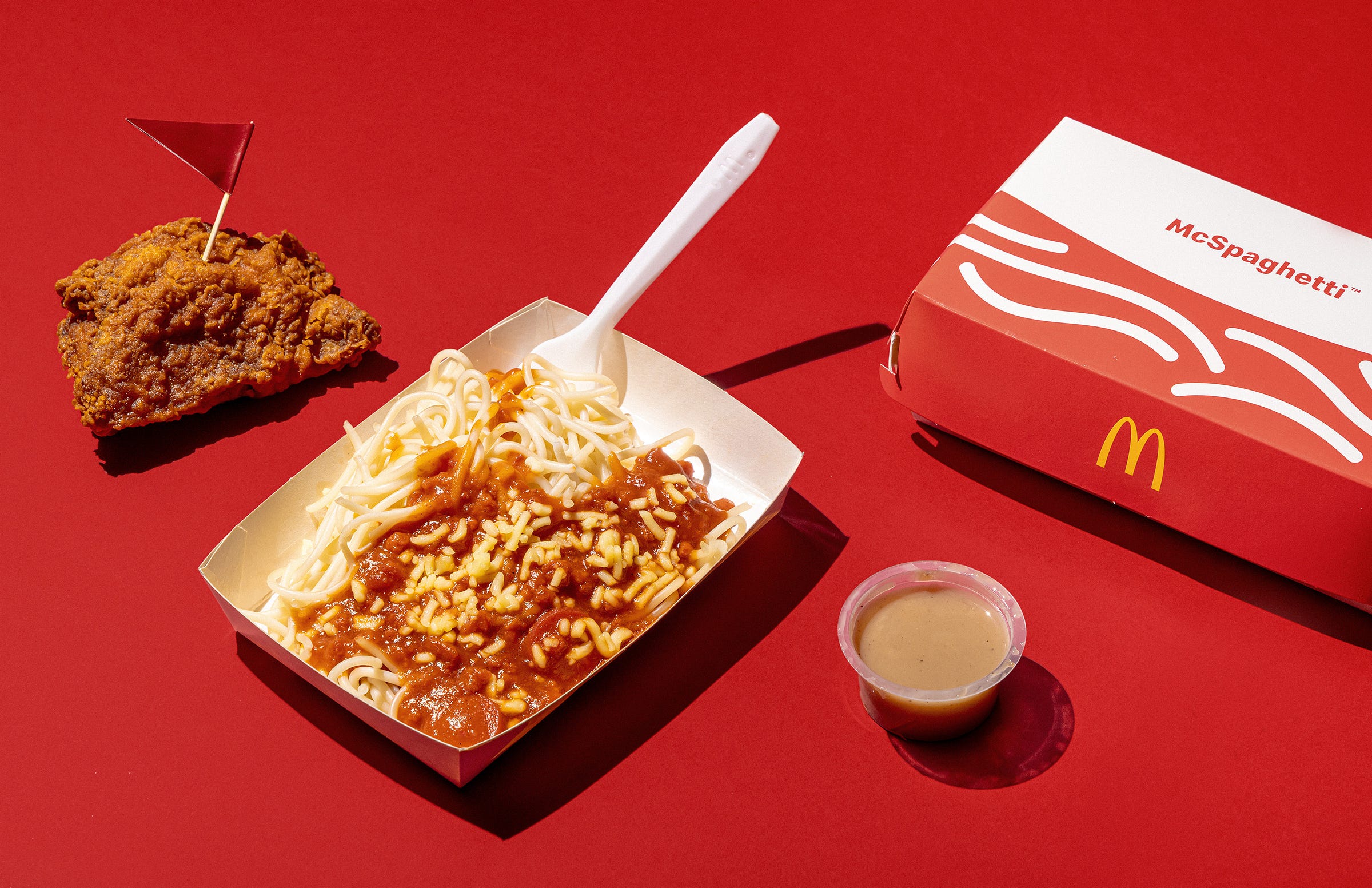
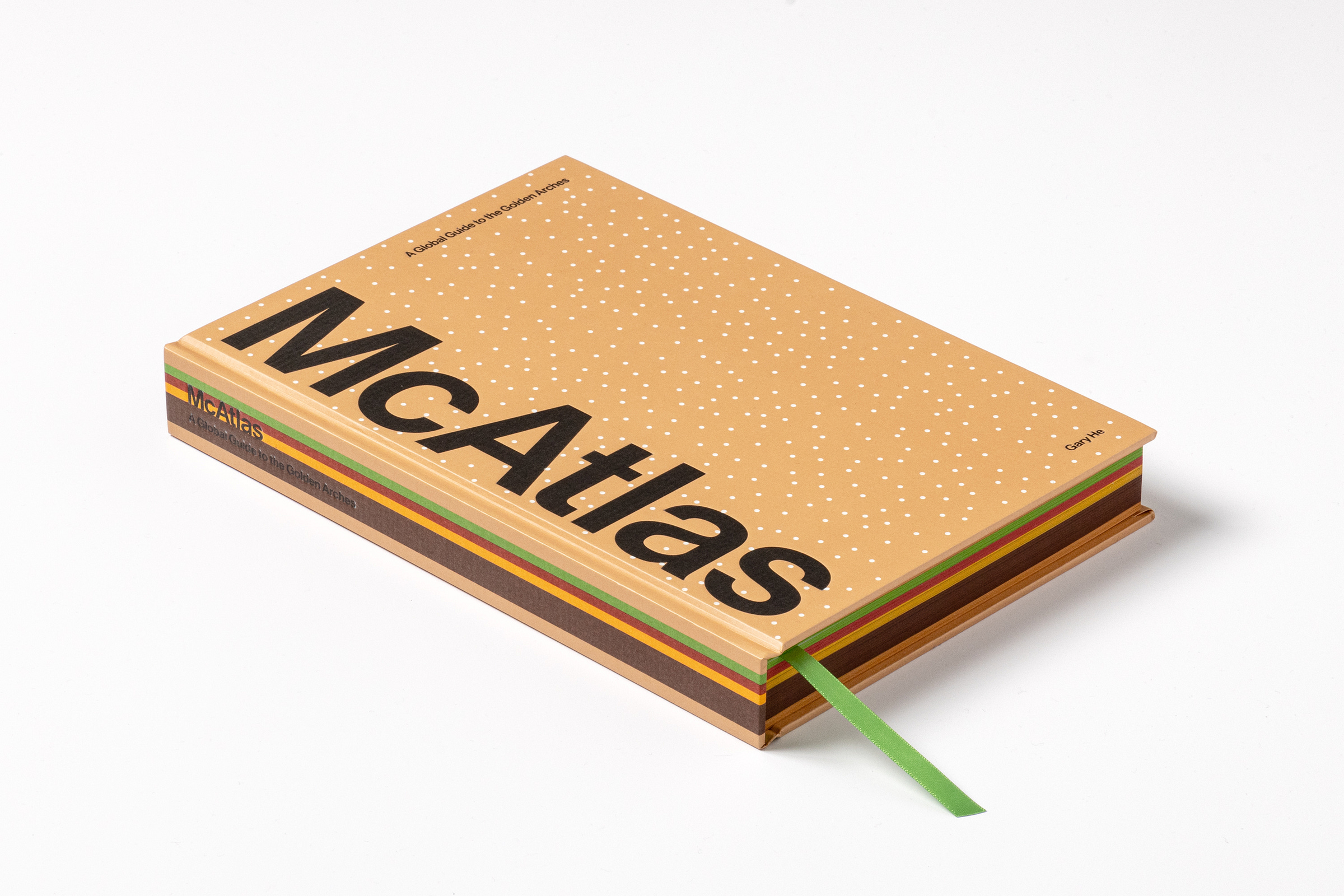
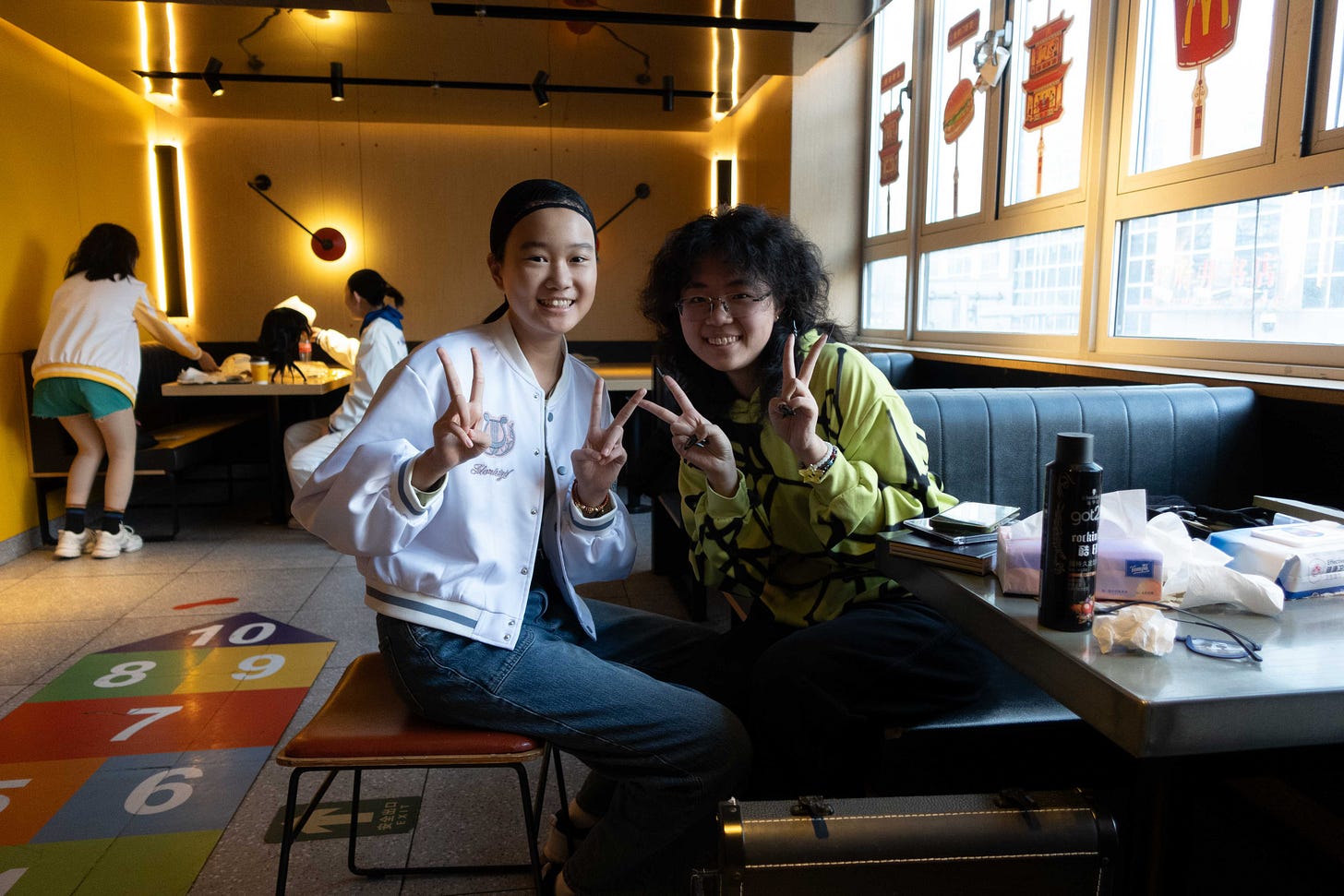
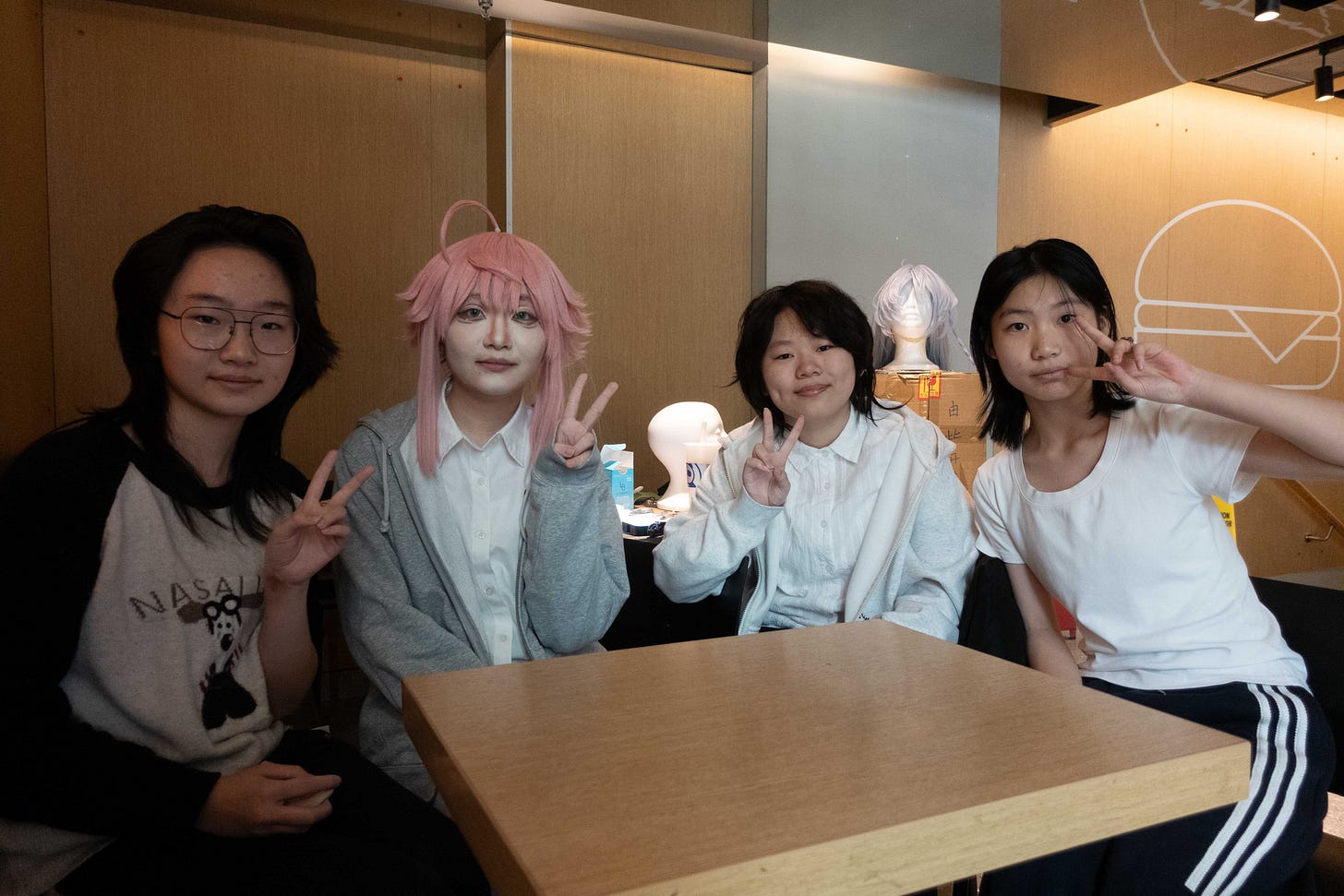
I taught English in Japan in the early 1980s. One day one of my students wanted to take me out to dinner. He ended up taking me to a local McDonald's. In the course of the meal he asked me in Japanese" Do you have McDonald's in the United States??"
He wasn't joking. And was surprised to learn that indeed we do.
Having personally eaten at McDonald’s in seventeen countries, including eleven with my daughter, I was delighted to see this fun article pop up in my inbox this morning. I began the McDonald’s travel tradition during the years my family lived abroad in South Korea and I traveled extensively with my daughter who was aged 8-12 during those years. She has continued the tradition as a college student; stopping by the Golden Arches while in London on her first international trip without me. And I’ve continued it without her, making the stop at every country with the restaurant during my first trip to Europe earlier this year.
We originally began this tradition as a way for my then young child to see how different cultures interpreted the idea of Americanized food, but it came to be something far greater. In so many places some of our meaningful interactions with local folks, particularly children, would happen at either McDonald’s or the local playground. Such moments were always such a profound reminder of how children are children no matter where you go.
Thank you for sharing about this book. I will be sure to be picking up a copy soon!